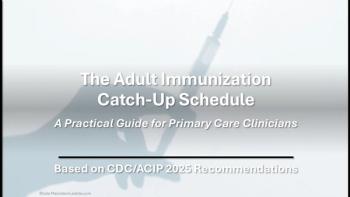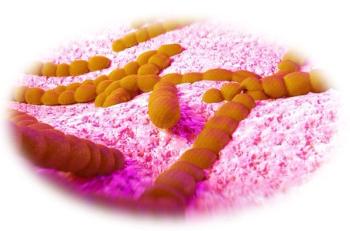
Bite Injuries
This 11-year-old boy presented with pain and swelling of the right hand. The boy had been bitten by a German shepherd while trying to feed the animal a day earlier. He had cleaned the wound with water. The boy's tetanus immunization status was up-to-date, as was the rabies immunization status of the dog.
Typical Dog Bite
This 11-year-old boy presented with pain and swelling of the right hand. The boy had been bitten by a German shepherd while trying to feed the animal a day earlier. He had cleaned the wound with water. The boy's tetanus immunization status was up-to-date, as was the rabies immunization status of the dog.
The boy was afebrile; his heart rate was 80 beats per minute, and his respiration rate was 18 breaths per minute. Two puncture marks were seen on the dorsal aspect of his right hand, which was swollen, red, warm, and exquisitely tender to touch. Results of the rest of the examination were normal.
Cellulitis of the dorsal aspect of the right hand was diagnosed. The patient was treated with oral amoxicillin-clavulanate (400 mg of amoxicillin and 57 mg of clavulanate potassium) tid for 14 days. The cellulitis subsided with treatment and was no longer evident at 5-day follow-up.
Most dog bites involve school-aged children. Doberman pinschers, pit bulls, German shepherds, rottweilers, huskies, and chow chows are more likely to bite than other breeds.1,2 The jaws of a large dog can deliver a bite force of more than 450 lb of pressure per square inch.2 Abrasions, puncture wounds, avulsions, contusions, and lacerations might result. Dog bite injuries most often involve the extremities, followed by the head, and then the trunk.3
About 5% to 10% of dog bite injuries become infected.4 The most commonly isolated bacteria in a dog bite wound are Pasteurella multocida and Staphylococcus aureus. Antibiotic therapy is indicated for all injuries with an established wound infection.
Amoxicillin-clavulanate potassium is the drug of choice.1 Acceptable alternatives include cefuroxime, or a combination of clindamycin and trimethoprim-sulfamethoxazole. Evaluation of the tetanus immunization status of the victim and the rabies immunization status of the dog is important.
(Case and photograph courtesy of Alexander K. C. Leung, MD, and Wm. Lane M. Robson, MD.)
REFERENCES:1. Presutti RJ. Prevention and treatment of dog bites. Am Fam Physician. 2001;63:1567-1572.
2. Smith PF, Meadowcroft AM, May DB. Treating mammalian bite wounds. J Clin Pharm Ther. 2000; 25:85-99.
3. Griego RD, Rosen T, Orengo IF, et al. Dog, cat, and human bites: a review. J Am Acad Dermatol. 1995;33:1019-1029.
4. Gluckman S, Talley J, Weber E. The acute care of bite wounds. Patient Care. 1995;29:146-165.
References:
REFERENCES:1. Presutti RJ. Prevention and treatment of dog bites. Am Fam Physician. 2001;63:1567-1572.
2. Smith PF, Meadowcroft AM, May DB. Treating mammalian bite wounds. J Clin Pharm Ther. 2000; 25:85-99.
3. Griego RD, Rosen T, Orengo IF, et al. Dog, cat, and human bites: a review. J Am Acad Dermatol. 1995;33:1019-1029.
4. Gluckman S, Talley J, Weber E. The acute care of bite wounds. Patient Care. 1995;29:146-165.
Newsletter
Enhance your clinical practice with the Patient Care newsletter, offering the latest evidence-based guidelines, diagnostic insights, and treatment strategies for primary care physicians.






































































































































































































































































































